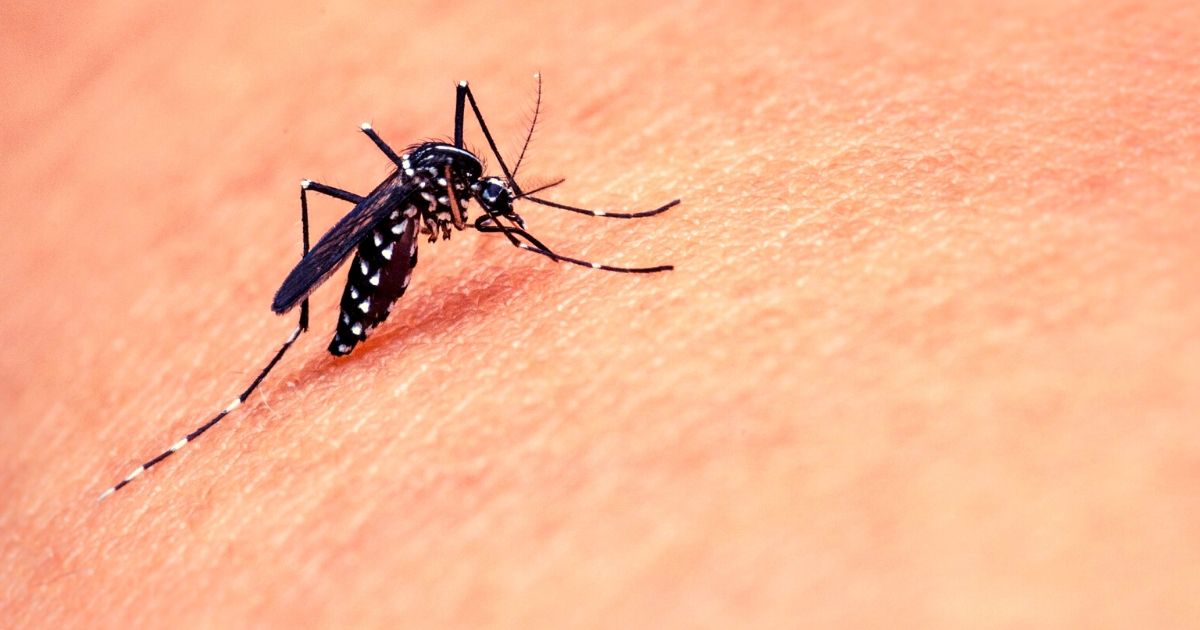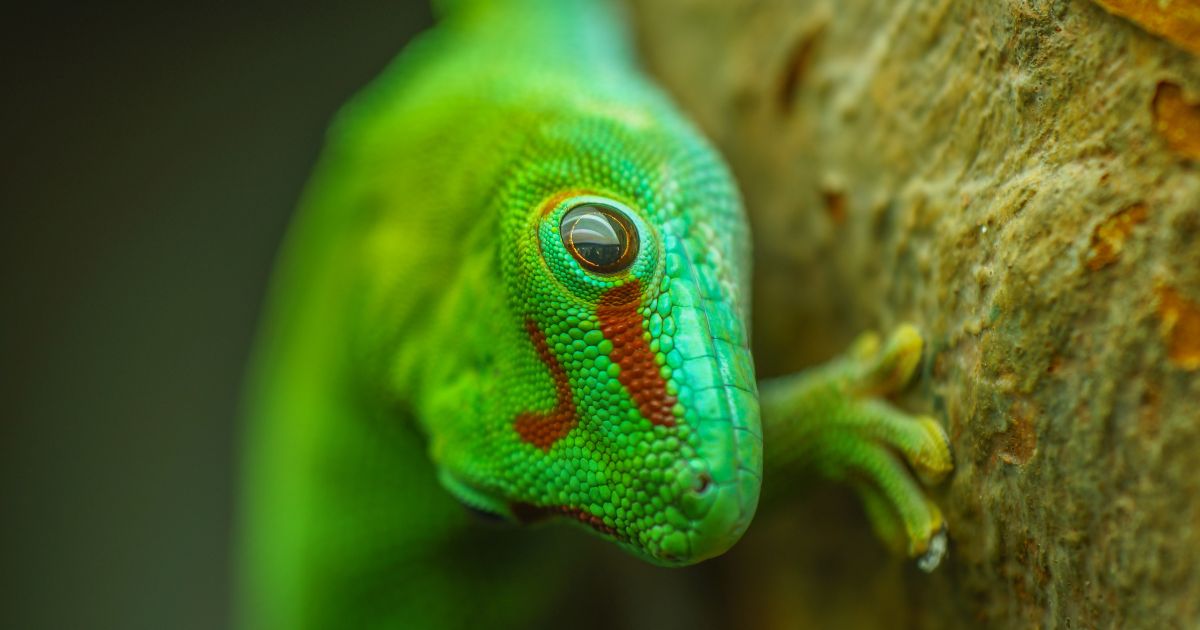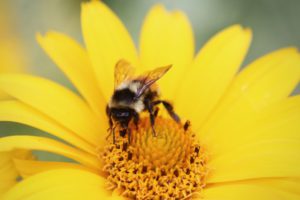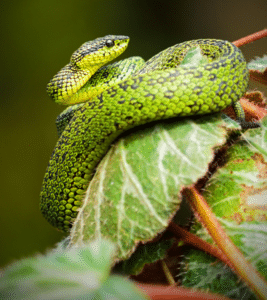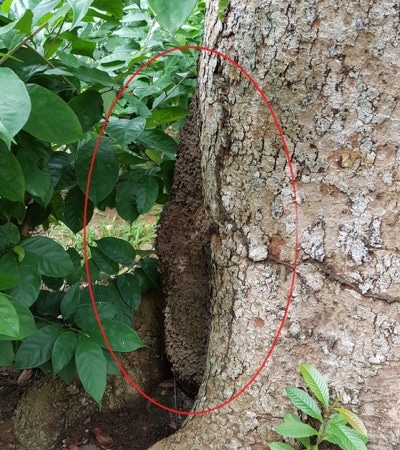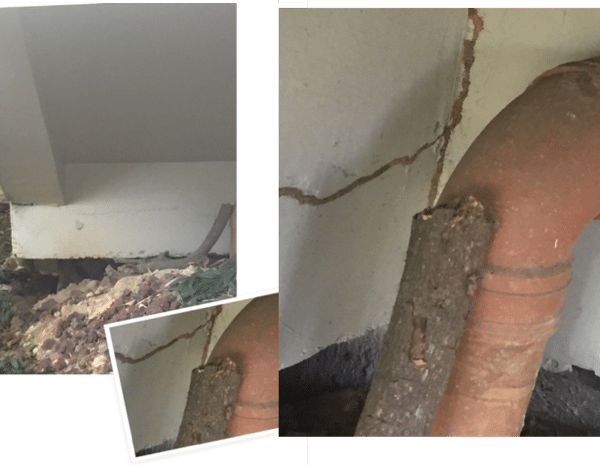What Kills Termites? Exploring Home Remedies
Termites
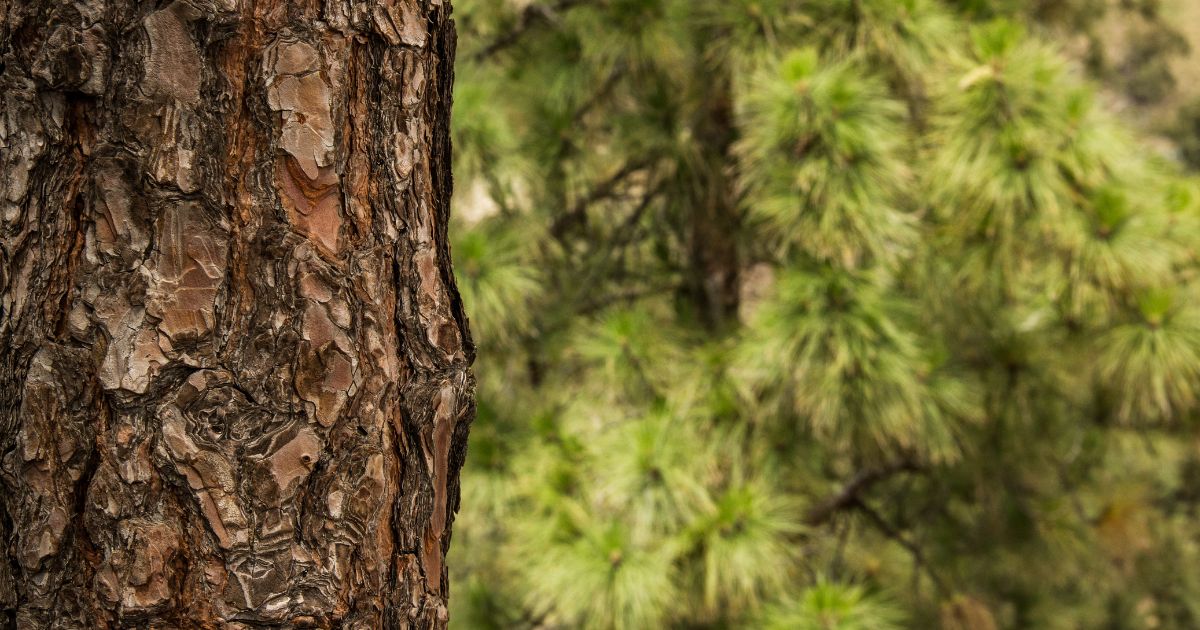
Termites can really damage your property if left unchecked. While professional termite treatments are effective, they can be costly and not always sustainable. If you are looking for an alternative treatment, home remedies for termites can be an option.
Do Home Remedies for Termites Work?
While professional pest control methods may be effective and reliable, home remedies can help manage some infestations and deter termites from returning. These DIY pest solutions most likely won’t be able to eradicate a large-scale termite infestation, but they can solve smaller problems and serve as preventive measure in the first place.
How to Kill Termites Naturally?
There are several natural alternatives that can help you get rid of termites without resorting to chemicals. Here are some solutions that can help protect your home from termites naturally:
Heat and Sunlight: Termites prefer moist places and don’t like extreme temperatures. If possible, expose termite-infested wood to direct sunlight and heat. This can help kill termites and dry out their habitat. This method is mostly applicable to the infested furniture and small wooden items.
Cardboard Traps: Create cardboard traps by wetting a couple of cardboard pieces and placing them near termite infested area on top of each other. Once termites infest the cardboard, remove and burn it to eliminate them – you might needs to repeat this a couple of times per day.
Essential Oils and Homemade Solutions: Certain essential oils and homemade solutions, like neem oil, boric acid or vinegar, have been known to repel termites. Mix them with water and spray them in termite-infested areas.
Regular Maintenance: The best way to prevent termite infestations is to maintain your home and property in good condition. Keep wood away from direct contact with the soil, fix leaks promptly, and reduce moisture which can attract termites.
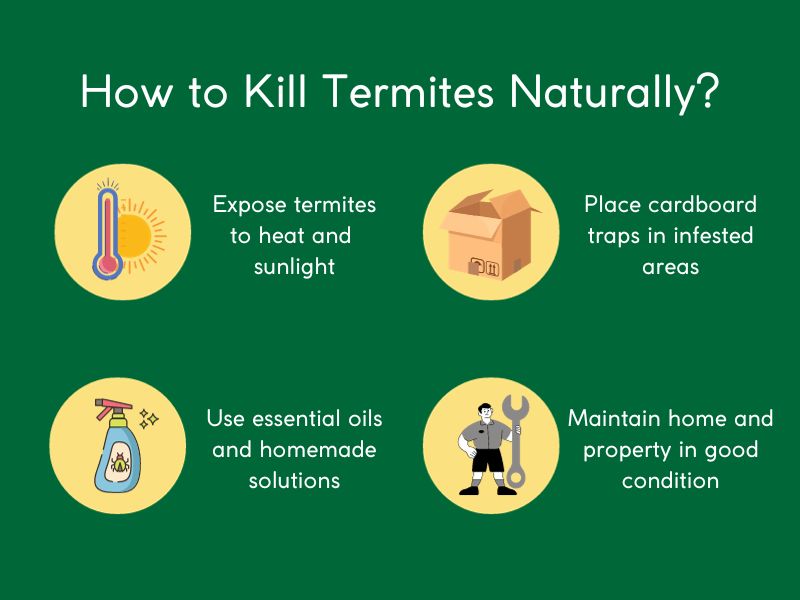
Homemade Termite Repellents
A homemade termite repellent can help get rid and prevent these insects from invading your home. Here are some homemade termite repellents that can be effective:
- Diatomaceous earth. If you have termites in your walls, consider using a mixture of diatomaceous earth and water.
- Combine equal parts of water and white vinegar in a spray bottle and apply it to affected areas and entry points where termites may enter. The strong smell of vinegar can prevent termites from getting in.
- Neem oil. Mix neem oil with water and spray it on affected areas or areas prone to termite infestations. Neem oil affects the termites’ hormonal balance, causing them to stop eating and eventually die.
- Soapy water. Mix liquid dish soap with water and spray it directly on termites. The soap coats their bodies, suffocating them. However, this method is only a temporary solution, as it doesn’t address the entire colony.
- Orange Oil: Orange oil, also known as d-limonene, contains components that are toxic to termites upon contact. Drill small holes into termite-infested wood and inject orange oil into the holes to eliminate termites.
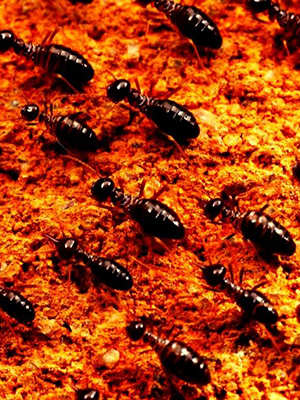
When to Call a Professional?
Home remedies for termites can be part of your pest control strategy, especially for prevention and small-scale infestations. However, it’s important to remember that they may not work for severe termite problems. If you suspect a significant infestation, it is best to consult with a professional pest control expert to assess the situation and determine the best course of action.
Author: Soleha Nisaa
Frequently Asked Questions
The best treatment for termites depends on the severity of the infestation and the type of termites. You might also want to combine several methods for better results.
Home remedies can be effective against some types of termites, e.g. subterranean termites. However, they may not be as successful against drywood or dampwood termites. You might want to contact Killem Pest for severe infestations or specific termite species.
While home remedies are generally considered safer than chemical pesticides, it’s important to keep these remedies out of reach of children and pets, and follow the instructions carefully.
Yes, some animals and insects are natural predators of termites, including ants, certain species of birds, and some parasitic nematodes. Introducing these natural predators to infested areas can help control termite populations to some extent.
Related Posts
Webinar Series: Innovative Pest Control in Singapore
Termites

As part of our effort to educate our customers and the public about pests and the latest technology advancements in the pest management industries, we are proud to present our first three-part webinar series. In this article, we summarise the three webinars held in 2020. The first three Killem Webinars were specially designed for facility managers while remaining relevant to the general public.
Dengue, Disinfection and Distancing
The topic of the first webinar was “Dengue, Disinfection and Distancing”. In this webinar, we discussed the rising number of dengue cases in Singapore amidst the Coronavirus pandemic.
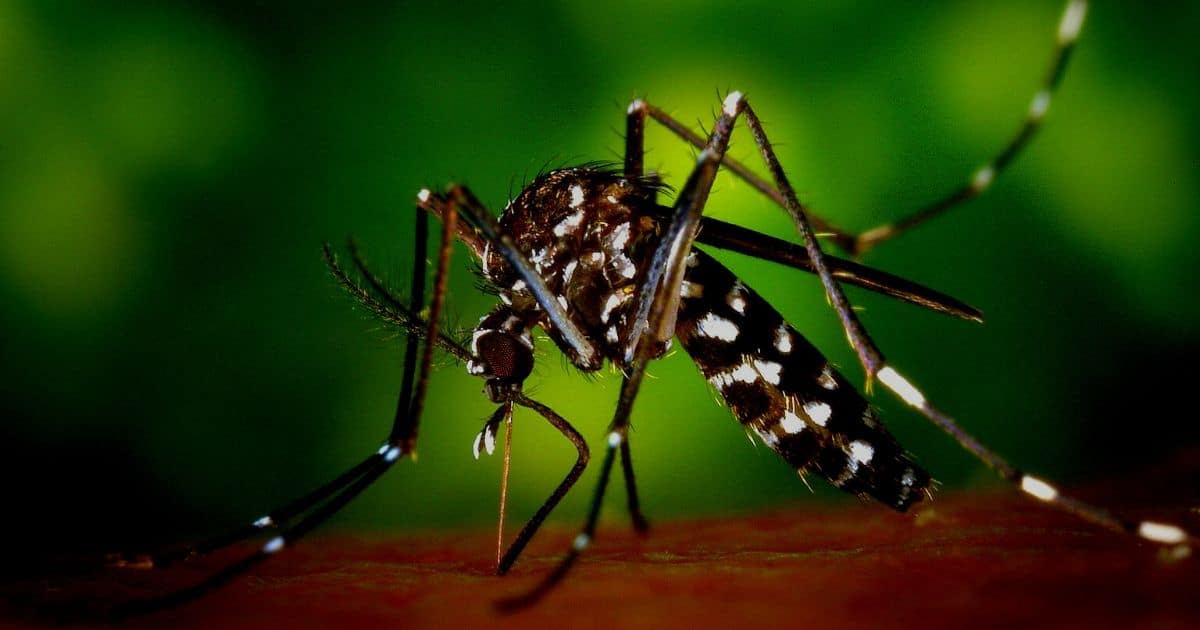
Topics include:
- The reasons behind the rise of dengue cases
- Ways to control the mosquito population
- The new norm (disinfection) that everyone is adapting now due to the pandemic
- Different types of disinfection methods
- The most critical areas to focus on during disinfection
- Things to consider when taking up a disinfection service
Q & A Session
Why is fogging still being carried out while misting treatment has a more prolonged residual activity?
Although misting is effective in areas around landscapes and plants, thermal fogging is still an effective method to kill mosquitoes present during the treatment. Thermal fogging is also used to comb a space to get rid of mosquitoes.
Can fogging be done around swimming pools?
The answer is no because the carrier of the insecticide used is usually kerosene or diesel. They cause the surface of the treated area to be oily and slippery. Therefore, carrying out thermal fogging near swimming pools may cause people to slip and fall. On the other hand, misting can be done near swimming pools since the carrier used is water and will not make the floor slippery.
Besides fogging and misting, mosquito treatment around swimming pools can be done by carrying out “Search & Destroy.” This method involves looking out for mosquito breeding sites and destroying them. Proper housekeeping around the swimming pool is also essential to eliminate harborage sites of mosquitoes.
How safe are the mosquito treatment methods?
The insecticides that we use are specifically formulated to affect designated pests. They are target-specific and will not affect other organisms like humans and animals. Proper personal protective equipment (PPE) needs to be used by Pest Management Professionals to prevent overexposure to chemicals. The small amount of chemicals that we breathe in during fogging treatment is not harmful to the general public.
What about the safety of sand granules used in mosquito control?
The sand granules are slow-releasing insecticides that can prevent mosquito breeding in locations with ponding water. They can also be placed at locations that may collect water to prevent mosquito breeding. Compared to larviciding using residual chemicals, sand granules’ action may be slower, but it can provide a longer-lasting effect.
What can be done to prevent mosquito breeding at public bin stations and bin centres?
Proper cleaning practices at these locations are important to prevent mosquito breeding. Gutters must be flushed daily to prevent the collection of water. Any uneven surfaces should be fixed so that water cannot build up. Another piece of advice from our operations director was to drill holes at the bottom of the rubbish bins so that water can escape from the bins to prevent water collection.
What are the effects of disinfectants on humans?
Inhaling small amounts of disinfectants will not have a significant effect on human health. However, we recommend avoiding overexposure to the disinfectants as much as possible. Thus, we need to ensure all safety precautions are in place and ensure no one is on-site during treatment. A treated area needs to be ventilated for one hour after disinfection is carried to allow the disinfectant particles to escape.
Is it true that certain disinfectants can last up to months or even years?
It may be true that a disinfectant can stay effective for a promised timespan. However, other factors may cause it to lose its effectiveness. For example, when people frequently touch a surface, the disinfectant on it may be wiped off. Besides, other pollutants such as dust and dirt may also contaminate the surface.
Cockroaches and Termites
In the second webinar, we discussed cockroaches and termites. These two insects are commonly encountered in our lives.
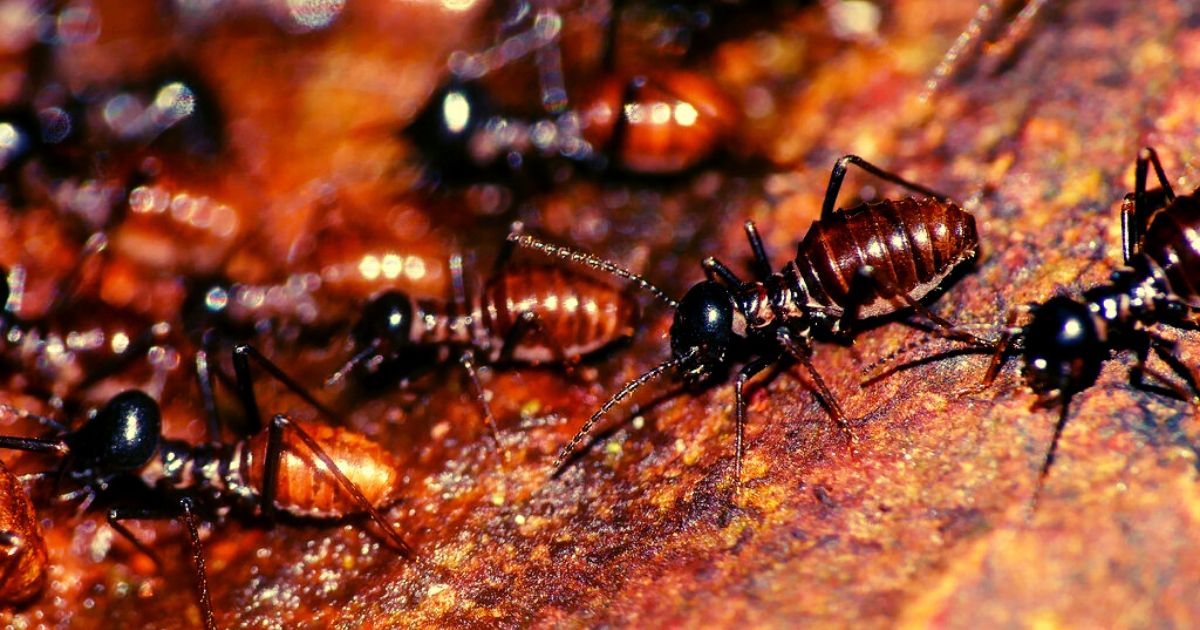
Topics include:
- Biology
- Prevention tips
- Technologies and treatments for the pests
Q & A Session
What is the hatching time of cockroaches’ ootheca?
The time needed for the ootheca to hatch differs between species. However, the typical household species take approximately 20 to 30 days to hatch into young cockroaches.
What is a suitable cockroach treatment method for a pneumatic waste collection system in high-rise buildings?
One of the latest treatment methods for cockroaches is using a product called Mirakn. Mirakn is applied using a dry spraying treatment. It consists of only the active ingredient and carbon dioxide as its carrier, making it an environmentally friendly insecticide that is stainless, odourless and non-combustible.
The carrier gas allows the insecticide to have excellent penetration. In addition, it can reach narrow gaps that are inaccessible via other treatment methods. Mirakn is safe for humans and pets, but the treated area should be left vacant to minimise exposure to chemicals.
Pro Tip: Methods used by professional pest control companies offer long-lasting protection against cockroaches.
All our Pest Management Professionals have undergone specialised training before they could become certified applicators of Mirakn. The frequency of Mirakn treatments at bin chutes can be affected by several factors. Depending on the infestation level and sanitation level, premises may need more frequent treatments to keep the cockroach population under control.
How to differentiate between subterranean termite and drywood termite infestations?
The signs given off by the infestations of these two groups of termites are different.
For subterranean termite infestations, the most distinguishable sign is the presence of mud tubes or soil-like materials in the infested area. The mud tubes are passageways constructed by subterranean termites to travel from one point to another. The most common sign of infestations by drywood termites is the presence of faecal pellets that resemble sawdust around the infested items or structures. The exit holes where the faecal pellets are pushed out of the infested wood can also be seen on the surface.
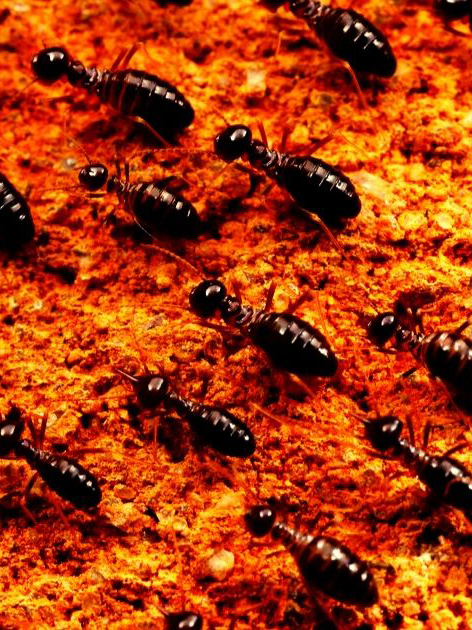
What are the effects of termiticides on plants and the surroundings?
The termiticides that Killem uses are Green Label certified. This guarantees that they are environmentally friendly. Besides, we strictly follow the termiticide’s recommended dosage to prevent harm and pollution to the environment.
What are the potential risks of the baiting treatment program for pets?
The active ingredient of the baits used for subterranean termite treatments targets the moulting process of termites. Animals with endoskeletons, such as dogs and cats, do not undergo a moulting process. Thus, pets are not affected by the baits.
How many bait stations need to be deployed in a heavily infested unit?
Subterranean termites live underground. Mud tubes are used for foraging. Therefore, although many mud tubes are found in a unit, they may belong to the same colony. Just one bait station is needed to control the termites in this unit. The termites will feed on the bait and bring the bait back to the nest. In turn, the bait is shared among the colony members.
Rodents: The Year of the Rat
In the third and last webinar, we focused on rodents. In this webinar titled “Rodents: The Year of The Rat’, we were honoured to have Dr How Yee Fatt as one of the speakers. Dr How is one of the leading entomologists in Singapore who is also the Business Support Manager (Technical R&D) of Bentz Jaz Singapore.

During the webinar, we discussed the biology and signs of rodent infestations. The speakers also shared several innovative prevention and management solutions. Killem Pest offers a special rodent monitoring and control system known as IPM square.
Q & A Session
What are the advantages of choosing IPM Square systems over other rodent monitoring systems?
There are many rodent monitoring systems in the market. The IPM Square Rat differs from the others as it incorporates snap traps with the use of sensors. While the system is detecting rodent activities, it simultaneously traps rodents and protects your house from infestations.
The IPM Square Rat is the camera used in rodent monitoring. It is highly intelligent and is able to recognise rodents using technology similar to facial recognition for humans. This technology enables accurate monitoring of rodent activities.
How do the monitoring systems work when there is a breakdown in the power supply or Wi-Fi networks?
The monitoring sensors and cameras are battery operated. Thus, they can function without a power supply. The outage of the Wi-Fi system may disrupt the monitoring systems since the data is continually being uploaded to the cloud servers.
However, the monitoring cameras have memory cards in them. Thus, they are still able to record the footage and store them in the local device storage. Users can also still review the footage by retrieving the local memory card and going back to a timeframe in the past.
How often should the rodent flush-out program be carried out?
The rodent flush-out program is an intensive program to manage rodent infestations. Depending on the infestation level, we have clients that require rodent flush-out programs with frequencies ranging from twice a year to monthly. Premises with heavy rodent infestations require more frequent rodent flush-out program applications. Routine maintenance can also help keep rodent populations under control.
Are glue boards safe for use in childcare centres?
Proper treatment methods are the key to ensuring treatment is safe. Glue boards should be strategically placed. Examples include the false ceiling or inside tamper-resistant bait stations (only accessible to Pest Management Professionals). The glue board method is applied to:
- Ensure the effectiveness of the control program
- Minimise the impact on the residents
Besides cages, are there any other rodent prevention methods for the garden or other outdoor spaces?
The tamper-resistant rodent bait station is a useful tool for rodent control. Rodenticides or traps are placed inside the station. Then, the station is placed in the garden. The bait stations prevent other animals, such as cats and dogs, from consuming the bait or activating the traps. Fallen leaves can serve as a home for rodents. Thus, keeping your garden and outdoor area clean and tidy is also important.
What is the rodent sealant?
During the webinar, we introduced a rodent sealant. This sealant can remain on the treated surface as long as there is no external disturbance. However, the sealant should be replenished or reapplied if it is disturbed by rodents or even humans. The sealant has a mild smell that repels rodents and is not detectable by humans during daily activities. The sealant has a shelf life of approximately five years. To maximise its shelf, proper closure and storage is recommended.
Is it possible to have more than one rodent species infesting a house?
Yes, it is possible. However, the rodents will nest at different locations. Roof rats and Norwegian rats are commonly found in Singapore. Roof rats (as their name implies) spend their time at higher elevations such as attics and false ceilings. Norwegian rats form burrows on the ground, or they nest in the sewers. The two species will not have the same nesting site as they are territorial.
What is the difference between shrews and rodents?
Shrews are animals that resemble rodents. Unlike rodents, shrews will not chew on wires or other items as they have different body structures. Shrews feed mainly on insects and other small animals such as birds, snakes and even rodents. Shrews are less likely to carry diseases because their behaviours are different from rodents. Rodents feed on a wide range of food, including rubbish and waste. They are commonly found in areas with poor sanitation such as the sewer and waste collection sites, which increases their chances of contracting various pathogens.
Related Posts
The Ultimate Guide to Termite Pest Prevention, Treatment and Control in Singapore
Termites
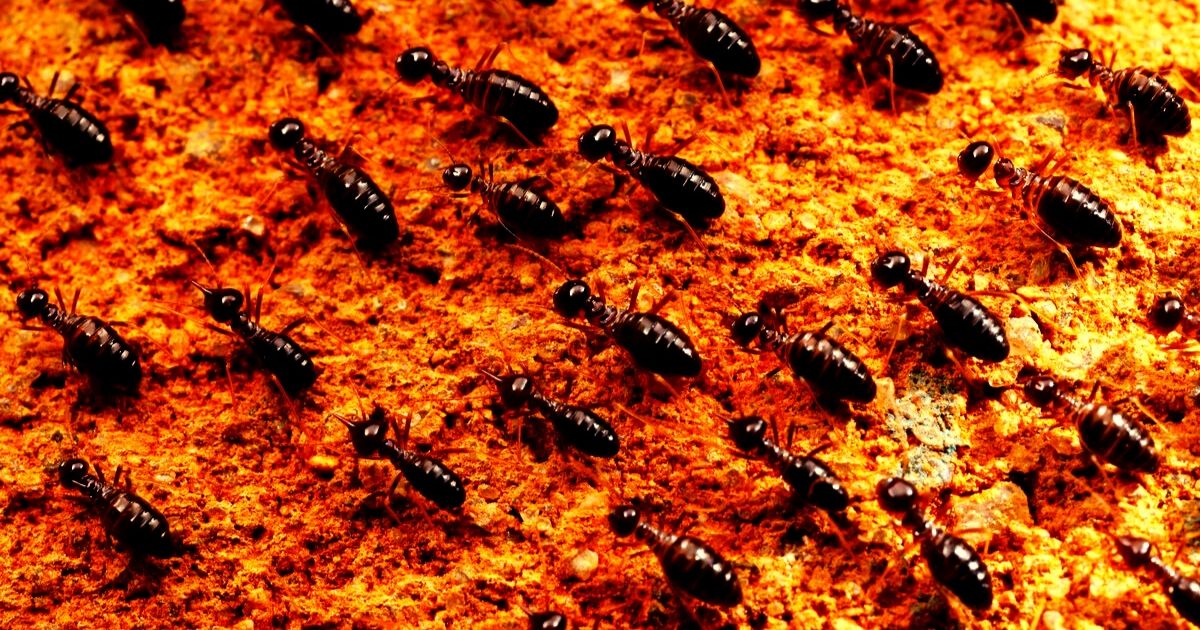
Termites are tiny insects that are well-known to the public for their ability to feed on and damage timber. Many homeowners or individuals who have experience dealing with termites, can probably relate a termite infestation to one of their worst nightmares if not handled properly.
“If you know the enemy and know yourself, you need not fear the result of a hundred battles.”
This is a famous quote from the great military strategist Sun Tzu. It is advised for us to understand more about an opponent or a problem we are facing. The goal is to come out with effective ways or solutions to conquer the problem. In this case, by knowing more about termites, we should be able to manage a termite infestation.
Table Of Contents
- Types of Termites in Singapore
- Life Cycle and Biology
- Signs of Termite Infestations
- Damage
- The Best Ways to Get Rid of Termites – What You Can Do
- What to Do When You Spot Them
- DIY Termite Treatments That Cost Less Than 10$
- The Best Ways to Get Rid of Termites
- Professional Termite Treatment: Baiting
- Professional Termite Treatment: Soil Treatment
- Professional Termite Treatment: Dusting
- Different Treatment Methods for Termite Pest Prevention
Types of Termites in Singapore
There are more than 3000 living and fossil species of termites around the world. Termites are classified into three main groups: Subterranean termites, dry wood termites, and damp wood termites.
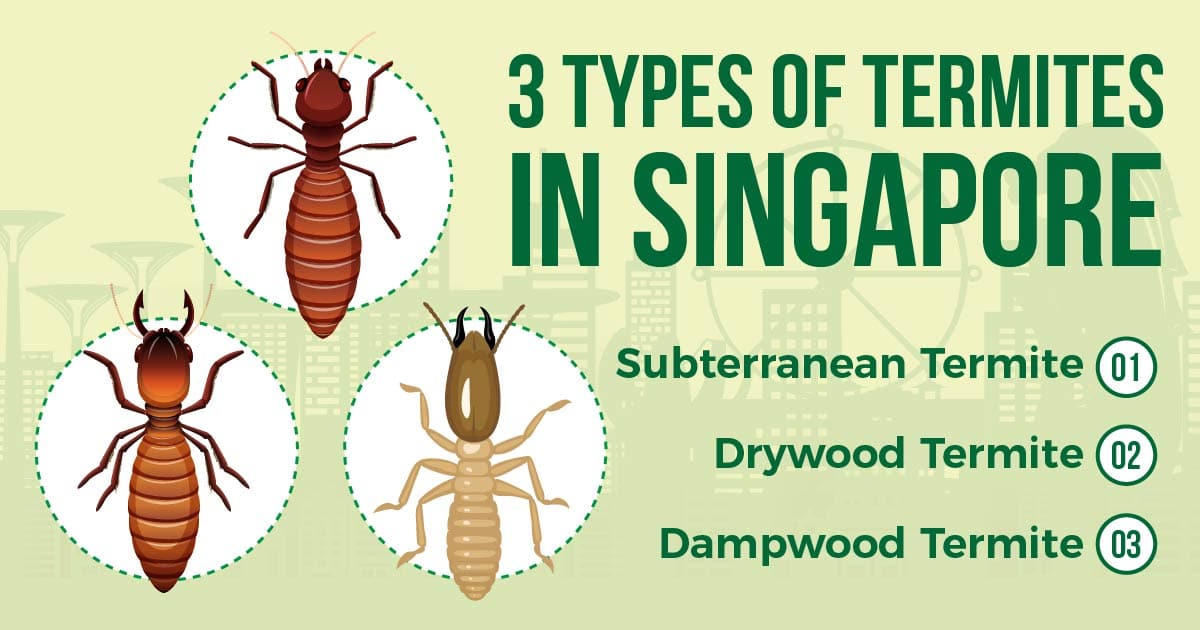
All three groups of termites live in Singapore. Subterranean termites and drywood termites are the ones of most significant concern to humans. In contrast, the damp wood termite plays a vital role in the ecosystem as a decomposer, especially in forested areas.
Subterranean Termites
As their name implies, most subterranean termites live underground. They look for areas free of human disturbances. Subterranean termites rely greatly on moisture in the soil. They have an excellent ability to build mud tubes to travel above ground. Mud tubes are tunnels made of soil, cellulose and other particulate matter. This helps termites prevent water loss as they travel above ground.
Drywood Termites
Drywood termites are not dependent on the moisture in the soil, so they live inside wood. They house themselves in structures made of dry wood such as doors, walls, furniture shelves and cabinets.
Dampwood Termites
Dampwood termites infest wood materials with high moisture content. They often live in decaying logs in the forest. Dampwood termites require a constant supply of water sources. For that reason, the termites usually house themselves in forested areas with fallen trees and decaying timbers.
What Causes Termites?
- Presence of wood
- Moist environment
- Poor maintenance
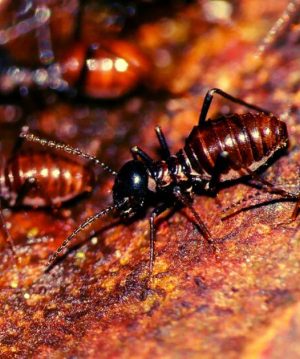
Life Cycle and Biology
One of the most fascinating behaviors in the world of insects is eusociality. Termites are eusocial insects that live in multigenerational families, practice cooperative brood care and division of labor.
In a termite colony, individuals are divided into three castes: reproductives, workers and soldiers.
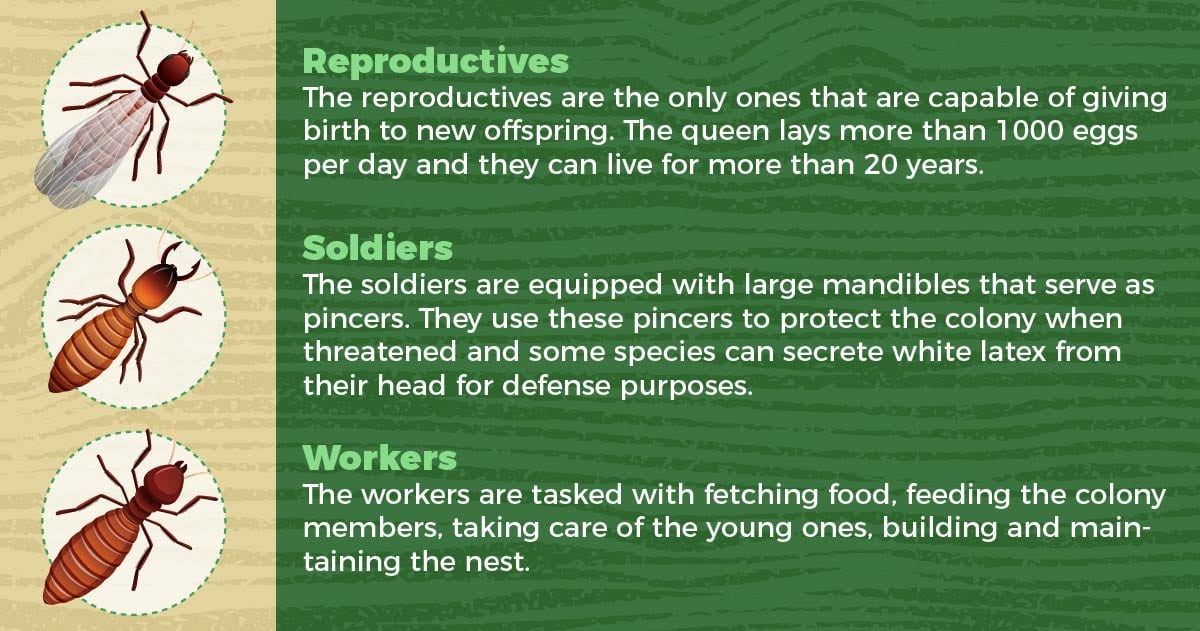
Reproductives
In a termite colony, the reproductives are the only ones capable of giving birth to new offsprings. The winged termites that are often seen swarming around light sources are reproductive termites. They are called alates or swarmers. Winged termites leave their nests to form a new colony. They find their mates through swarming and search for suitable nesting sites upon successful pairing. These termites form the king and queen of the new nest.
The queen lays more than 1000 eggs per day and they can live for more than 20 years.
A termite colony may continue to survive after the death of the king and queen. There are secondary reproductives that can take over their duty.
Soldiers
The soldiers have large mandibles that serve as pincers. They use these pincers to protect the colony when threatened and some species can secrete white latex from their head for defense purposes. The large mandibles hinder the ability of the soldiers to feed. There, they have to rely on the workers for feeding.
Workers
The workers fetch food and feed the colony members. They take care of the young ones by building and maintaining the nest. Workers are the ones responsible for the damages done. In some colonies, the workers also consist of the immatures. These can further develop into reproductives or soldiers when necessary.
Signs of Termite Infestations
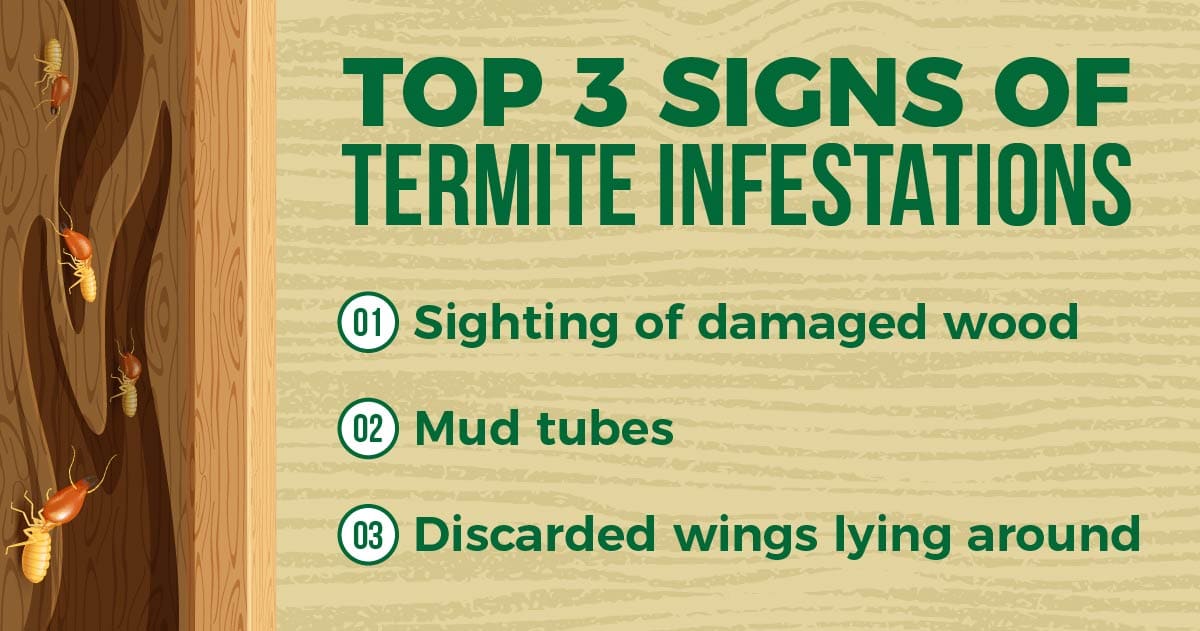
One of the most obvious signs of termite infestations is the sighting of damaged wood. Termites usually feed underneath the surface of wood. Their damages cause the surface to appear bubbly. Damages caused by subterranean termites sometimes resemble water damage.
The mud tubes constructed by subterranean termites for traveling above ground serve as another distinct sign of a termite infestation.
A large number of mud tubes are commonly found in areas with heavy infestations.
Termites feed on the interior of wooden structures. This empties the structures and gives off hollow sounds when they hit their heads.
Termites can communicate by sound. Termite soldiers hit their heads against the tunnels to alert the other colony members when disturbed. When this happens, a tapping sound often comes from the infested wood.
Flying termites are a nuisance. The wings they shed is unsightly especially when in large numbers. The presence of a large number of flying termites and discarded wings might indicate the presence of a termite colony nearby.
Drywood termite infestations are detected through the presence of their fecal pellets that resemble wood dust. The fecal pellets are found near infested wooden structures. These pellets push through exit holes that are visible on the surface of the infested wood.
Last but not least, a termite infestation can be confirmed when live termites are spotted. Although it is not common, termites can be detected when their mud tubes or infested wood are accidentally disturbed.
Damage
Termites can cause severe damage. The colony size of a subterranean termite can easily reach 1-2 million in total. It would only take less than 6 months for them to finish a 2×4 wooden beam.
Structural Damage
The most significant damage caused by termites is on buildings and structures.
They feed on cellulose materials in wood. By hollowing it out, they cause wooden structures to weaken and become frail. They weaken the wooden structures like beams, pillars and ceiling. In turn, this eventually leads to the collapse of the structures.
Safety Concerns
Timbers were the primary materials used in the construction of older buildings. Some of the wooden structures are preserved for modern use. Termites can hollow out roof truss, beams and pillars. This causes the roof or the entire building to collapse when they can no longer sustain the structures’ weight.
Aesthetic Damage
Besides causing structural damages, termites can also affect the aesthetics of a building. Chipping paint, uneven surfaces, grooves on wood and mud tubes are some sights that one might notice in an infested home.
Fire Hazard
Subterranean termites are known to infest the electrical components such as circuit boxes and wire trunkings, which are rarely accessed by humans. They may damage the electrical elements, causing short circuit and even fire.
Health Concerns
Termites are not of medical importance as they do not transmit diseases to humans. However, due to the moist and humid environment in which they reside, they are usually accompanied by mold and fungi. The spores released by the molds and fungi may have adverse effects on people with allergies or asthma.
Damage and Repair Costs
When termites severely infest an object or structure, money is needed to repair or replace them. More often than not, termite infestations require homeowners to repair or replace more than one item. For example, termites infesting the wooden parquets and skirting require the replacement of both items.
Pro Tip: DIY treatment is ineffective unless it can target the underground colony or the nest.
The Best Ways to Get Rid of Termites – What You Can Do
Pest management professionals in Singapore may carry out inspections during their visits to your house. You can rely on them to keep tabs on termite activities. However, if you do not have a contract with one, you will have to get rid of termites yourself.
Where to Spot Them
1. Flooring and skirting
Damaged or raised portions of wooden flooring and skirting are indications of termite infestations. Mud tubes are visible on corners and edges where the wall and floor meet.
2. Storerooms
Termites are spotted in storerooms, especially if human movements are infrequent or if there are hidden corners that are hard to access.
3. Pipes
Areas around pipes usually have higher humidity, which termites prefer. Moisture content can also be high if there is leakage. This makes the area around pipes a hotspot for termite infestations.
4. Exterior wall
Mud tubes can be seen on exterior walls as termites make their way into your house.
5. Outdoor area
Termites can hide among the unused building materials piled outside of your home. The tree stumps in your garden can be infested with termites if not removed quickly.
6. Wooden door and window frames
Wooden door frames are present in most homes and they can become infested with termites. Look for signs such as mud tubes or exit holes and faecal pellets when you clean your windows and doors for early detection of termites.
What to Do When You Spot Them
If you come across any sign of a termite infestation, it is important to remember that termites are unlikely to cause any devastating damage overnight. Therefore, do not panic and do not use conventional insecticide aerosols to spray the affected area! You may snap a photo of the affected area so that your pest management service provider can identify the type of termite infestation you are facing. It is important to not disturb the affected area.
Some homeowners may try to clear any mud tube or infested wood. It is not advisable to do so unless recommended by the pest management professionals.
This is because it may make the control of termites more difficult when a colony is disturbed. Contact a local pest management professional in Singapore so that they can provide you with useful advice and control measures.
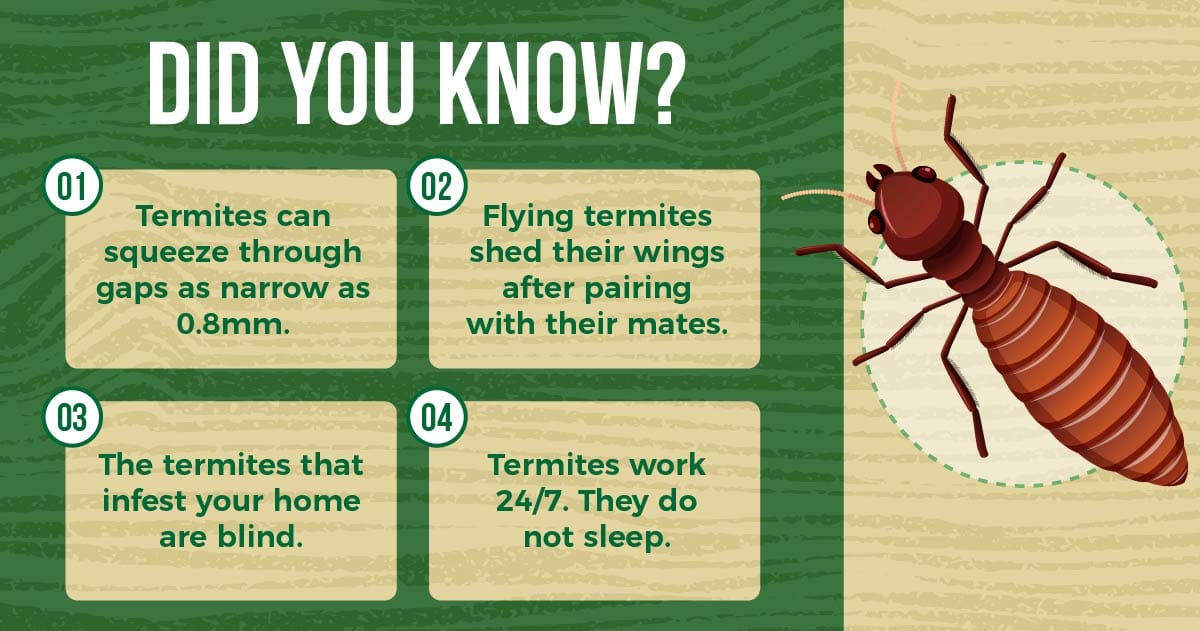
DIY Termite Treatments That Cost Less Than 10$
While the execution of termite treatments generally requires professional knowledge and training, there is something you can do to get rid of the annoying flying termites. All you need is soapy water and a light source.
Like many other insects, flying termites get drawn to light sources, so when water is placed under a light source, termites can get confused and are drawn to the reflection of light in the water, causing them to drown in the water.
The Best Ways to Get Rid of Termites
As mentioned earlier, subterranean termite colonies live underground. Only a small portion of the colony members move above the ground. Therefore, treatment is ineffective unless it can target the underground colony or the nest. This is why we do not recommend homeowners to carry out any procedure on their own.
Professional Termite Treatment: Baiting
To target the underground colony, baiting treatment is the most suitable method. The bait used by pest management professionals is specifically designed only to target subterranean termites. The bait consists of cellulosic material impregnated with an insect growth regulator. The cellulosic material serves as a food attractant while the insect growth regulator acts as a slow-acting toxicant.
After the termite workers consume the bait, other termite colony members receive the toxicant. Baiting treatment usually takes 1 to 2 months to suppress a whole termite colony. It might seem like a long treatment period, but it is the best method to prevent re-infestation from the same termite colony.
Professional Termite Treatment: Soil Treatment
However, baiting is not a panacea. Some other subterranean termite species are less likely to be affected by baiting. They are the fungus-growing higher termites that have alternative food storing in the fungus comb besides having wood as the primary source. The transfer of toxicants will be slowed down, especially if the target colony size is big. In this case, soil treatment replaces baiting.
Soil treatment is an approach that applies Green-label certified liquid termiticides to create a chemical barrier in the soil under or around the foundation of a building. The termiticides can prevent the invasion of subterranean termites for years.
Professional Termite Treatment: Dusting
Also, one of the most conventional methods of managing termites is dusting. This method is the least expensive treatment. It is used to puff insecticidal dust into the mud tube of termites. The foraging termites, which have been puffed by the dust, are expected to pass the toxicant to their nestmates by social interaction.
The success of dusting depends on the skill and technique of the pest management professional. If too much dust puffs into the mud tube, the treated termites will die before they pass on the toxicant.
Different Treatment Methods for Termite Pest Prevention
The treatment methods for drywood termites are different from the treatments used to control subterranean termites. As previously mentioned, they have different biology and behaviour.
Drywood termites do not need soil and moisture to build their colony. Infested wood with drywood termites transported everywhere. Since the whole colony of drywood termites can live within a piece of timber structure, we should inspect and treat the wood before we use or move the wood into our home.
Wood can be pre-treated with chemicals to stop termites from digesting inside the wood. Then, varnishing the wood or applying a fresh coat of paint helps prevent the attack of drywood termites in the future.
It is often too late to perform any prevention once you have noticed the presence of fecal pellets. There are several ways to treat drywood termites, but the most common method is a wood replacement. The reason behind this is to remove the entire termite colony in the infested timber.
Some pest management professionals may provide fumigation for drywood termites treatment, while others may offer the foaming method if there is only a mild infestation. However, the success of treatments for drywood termites is often unpredictable. Therefore, prevention is better than cure.
In general, cooperation between you and your pest management professional is the major key to the success of termite treatment. If you would like more information on how Killem Pest can help you from termite infestation, get in touch or call us now!
Frequently Asked Questions
Termites very rarely bite humans, and as these bites are not toxic they don’t pose health risks.
Termites don’t transmit diseases harmful to humans, however, some people can suffer from allergic reactions and asthma attacks when living in infested homes.
You can kill termites by using special chemicals that kill termites in infested areas. It’s best to consult pest control specialists to avoid poisoning your pets or children.
Related Posts
Drywood Termites and Subterranean Termites
Termites

Drywood termites and subterranean termites are among the common termite species. An infestation of termites can be destructive. In this article, we discuss the signs and treatment methods of termite infestations.
Termites have been classified under order Blattodea of which cockroaches are the other members of the order. Ants, on the other hand, are from the order Hymenoptera which includes other insects such as bees, wasps, and hornets.
Termites are eusocial insects that practice an advanced level of social organization. Unlike many other animals, termites practice division of labor, and they live in colonies. Inside each colony, the individuals are divided into different castes, each having their unique duties to play in maintaining a properly functioning colony.
The Termite Society
In a termite colony, there are workers, soldiers, and reproductives which consist of the king, queen, and alates. Termite workers are the ones responsible to find food for the other members of the colony so they are the culprits behind the damage we suffer from a termite infestation.
Their other responsibility includes maintaining the proper functioning of the nest, looking after the young ones as well as feeding the other members of the colony. The soldiers are responsible to guard the nest and protect it from intruders. The king and queen are involved in the reproduction of new offspring while alates are termites with wings that venture out to mate and establish a new colony.
Dampwood Termites, Drywood Termites, or Subterranean Termites?
Termites can be divided into three types based on their behaviours and habitats.
Dampwood termites are termites that rely greatly on moisture to survive. They can be found in damp and decaying timber. Dampwood termites play an important role in the regulation of the nutrient cycle in the natural ecosystem.
In contrast to dampwood termites, drywood termites are less dependent on moisture. They build their colonies in wooden structures and furniture and are able to glean water from the wooden materials to meet their needs.
The third type of termites is subterranean termites. Subterranean termites are dependent on moisture so they build their colonies underground or build mounds on soil to derive water from soil.
Among all the different types of termites, subterranean termites and drywood termites have more impacts to humans compared to dampwood termites. Subterranean termites and drywood termites are important urban pests because they can cause serious damages to human properties so they are given more attention by the pest control industry.
The Ultimate Guide to Termite Pest Prevention, Treatment and Control in Singapore
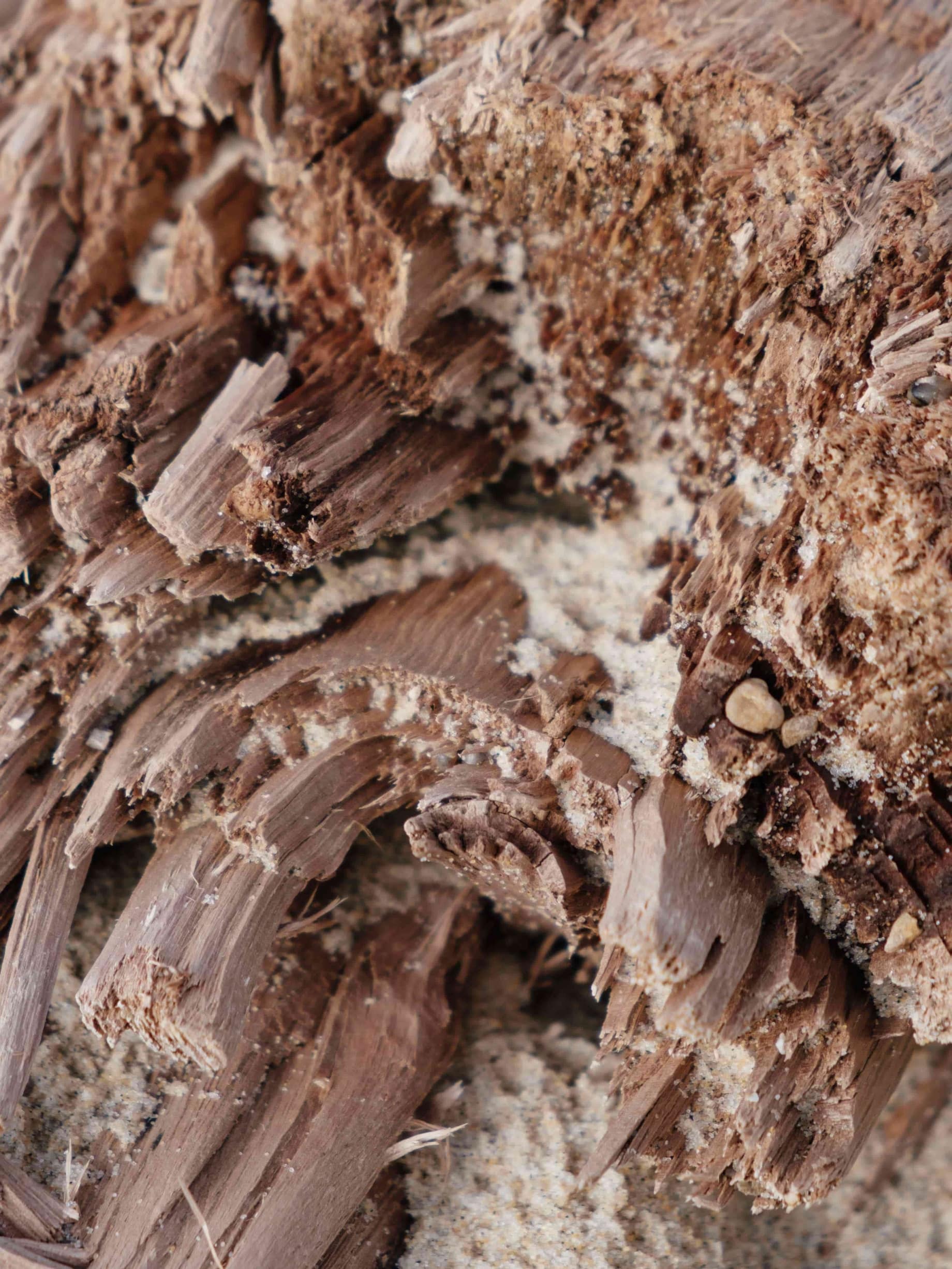
What are the Signs of a Termite Infestation in Your House?
There are some tell-tale signs that indicate a termite infestation. Look out for the following signs of termite infestation to see whether your house is safe from termite infestation.
1. Wood powder near wooden structures or furniture
If you have been noticing fine, sawdust-like wood powder around your house, chances are your house might be infested by wood-boring insects such as wood-boring beetles or drywood termites. The wood powders are in fact the excretory wastes of the insects and they are also known as fecal pellets. The fecal pellets are found when drywood termites push out their feces out from the exit holes that can be found on the surface of the infested items.
2. Mud tubes
Mud tubes are tunnels constructed by subterranean termites to provide a sheltered pathway when they venture out of their nests to forage for food. They protect subterranean termites from desiccation as well as predators by isolating them from the external environment. The presence of mud tubes is an obvious sign of a subterranean termite infestation. When an active mud tube is disturbed, subterranean termite workers and soldiers can be observed.
3. Flying termites
Alates or swarmers are termites with wings. The wings enable them to fly out of their nests to mate. Subterranean termite swarms are larger and contain more individuals compared to that of drywood termites. Once an alate finds its “life partner”, they will settle down and establish a new colony. Termite swarms are one of the most obvious signs of termite infestations.
Pro Tip: Get your home inspected by a pest control professional each year.
How to Treat Termite Infestations?
What are some of the most effective treatment methods for termite infestations?
1. Baiting
As mentioned earlier, worker termites are the only ones in a termite colony that are able to forage for food. They feed and share their food with the other nest mates through a process known as trophallaxis. Baiting is used in the management of the subterranean termite infestations because it is able to eliminate the entire colony of subterranean termites. It involves feeding subterranean termites with baits that contains active ingredients that kills them. The entire colony collapses as baits are passed around the colony members, causing them to die.
2. Soil Treatment
To eliminate a subterranean termite colony, its nest, which is located underground, must be targeted. Soil treatment is usually done by injecting termiticides into the soil. Depending on the type of termiticide used, soil treatment is able to kill or repel termites that come into contact with the treated soil. Non-repellent termiticides are effective in eliminating subterranean termites while repellent termiticides create barriers that subterranean termites shun.
3. Treating the Infested Wood
Unlike subterranean termites, drywood termites cannot be treated using baiting and soil treatment as their colonies are located inside the affected wood and not underground. Drywood termite colonies are usually smaller compared to that subterranean termites and are found inside infested timbers. When treating an infested timber by soaking them in or injecting them with termiticide, you may get rid of the termite colony. The best way to prevent the spread of dry wood termite infestation is by discarding the infested items or timbers.
Termite infestations are destructive so they must be taken seriously. While there are measures that can be taken to reduce the risk of termite infestations, early detection of termite activities and proper treatment methods will minimize the damages caused by termites.
Frequently Asked Questions
Usually, termites will find gaps and cracks in your home, where they dig out a nest and start reproducing, slowly damaging your house. It can also happen when infested furniture is brought into your house.
Subterranean termites are attracted to moisture, so standing water, leaky pipes or improper drainage can attract them to your home.
Subterranean termites can cause more damage as they build large colonies, so they are considered worse than drywood termites.
Related Posts
Fumigation Treatment: All You Need to Know
Termites

The never-ending battle between humans and pests has led to the rapid development of pest management services in Singapore, including fumigation treatments. The wide-ranging pests and their nature of behaviour can interfere with human activities.
The difficulties of controlling pests – due to the limitation on certain treatments’ application – has led us to using fumigation treatment to deal with severe pest issues.
Fumigation treatment in Singapore is usually carried out in the freight, shipping, storage and food manufacturing industries. All fumigators must apply for training and a licence from the NEA (National Environmental Agency). Beyond that, pest management companies are also responsible for the application of fumigation permits before they are allowed to carry out fumigation treatments in Singapore.
Fumigants in Singapore
Fumigation treatment is a unique form of action for pest management.
It is usually adopted by pest management companies and clients when there are no other feasible forms of control to the target pest. However, most fumigants such as hydrogen cyanide, methyl bromide and hydrogen phosphide are toxic to pests as well as humans. Nevertheless, fumigation treatment has effective killing effects and has become an inevitable pest management method in Singapore.
Mode of Action of Fumigation Treatment
Fumigation treatment is a process of release or dispersal of toxic chemicals onto the targeted pests. It can be very fast as the volatile nature of fumigants is able to pass through inaccessible spaces. It has almost no limit to penetrate any object as long as tiny pores are present on the surface of the treated object. In other words, the entire structure is secured with the fumigation treatment. The toxic chemicals enter the pest body mainly through its breathing system.
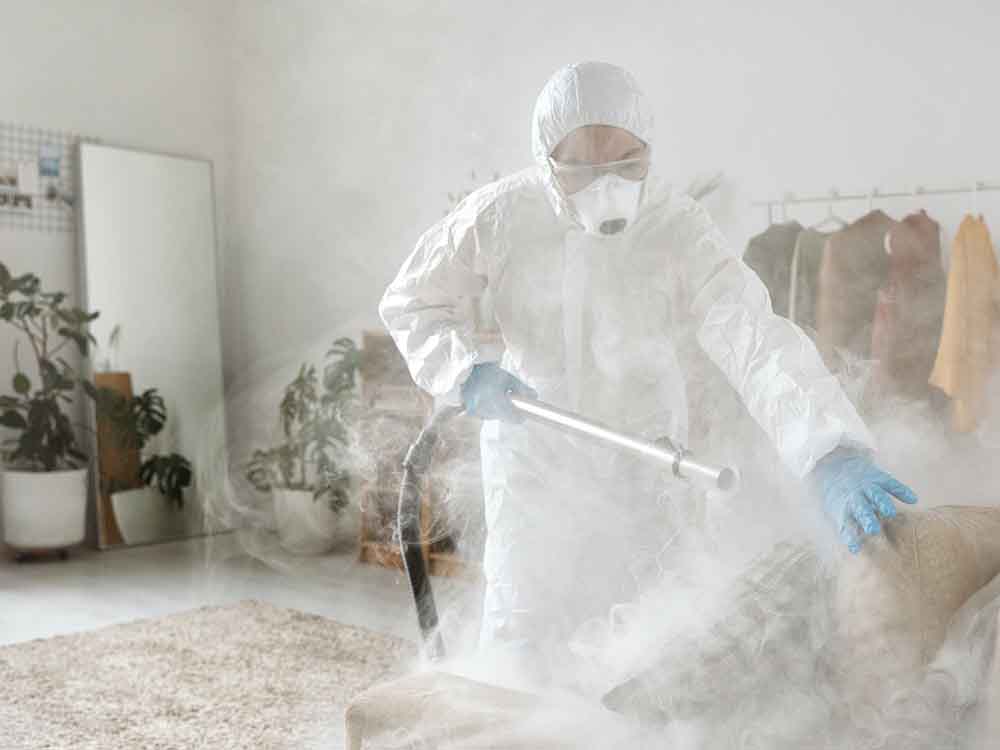
Target Pests in Fumigation Treatment
In general, fumigation treatment is helpful in dealing with all types of pests including stored product pests, wood borers, subterranean and drywood termites, bed bugs, cockroaches and even rats. It is often carried out in enclosed shipping containers, vessels and warehouses.
Fumigation on smaller structures such as infested wood and furniture is usually done for targeting drywood termites and wood borers. In this case, infested wood has to be removed and placed in an air-tight space to allow the proceeding of fumigation treatment.
What Pest Control Treatment Methods Can You Use To Eradicate Pests?
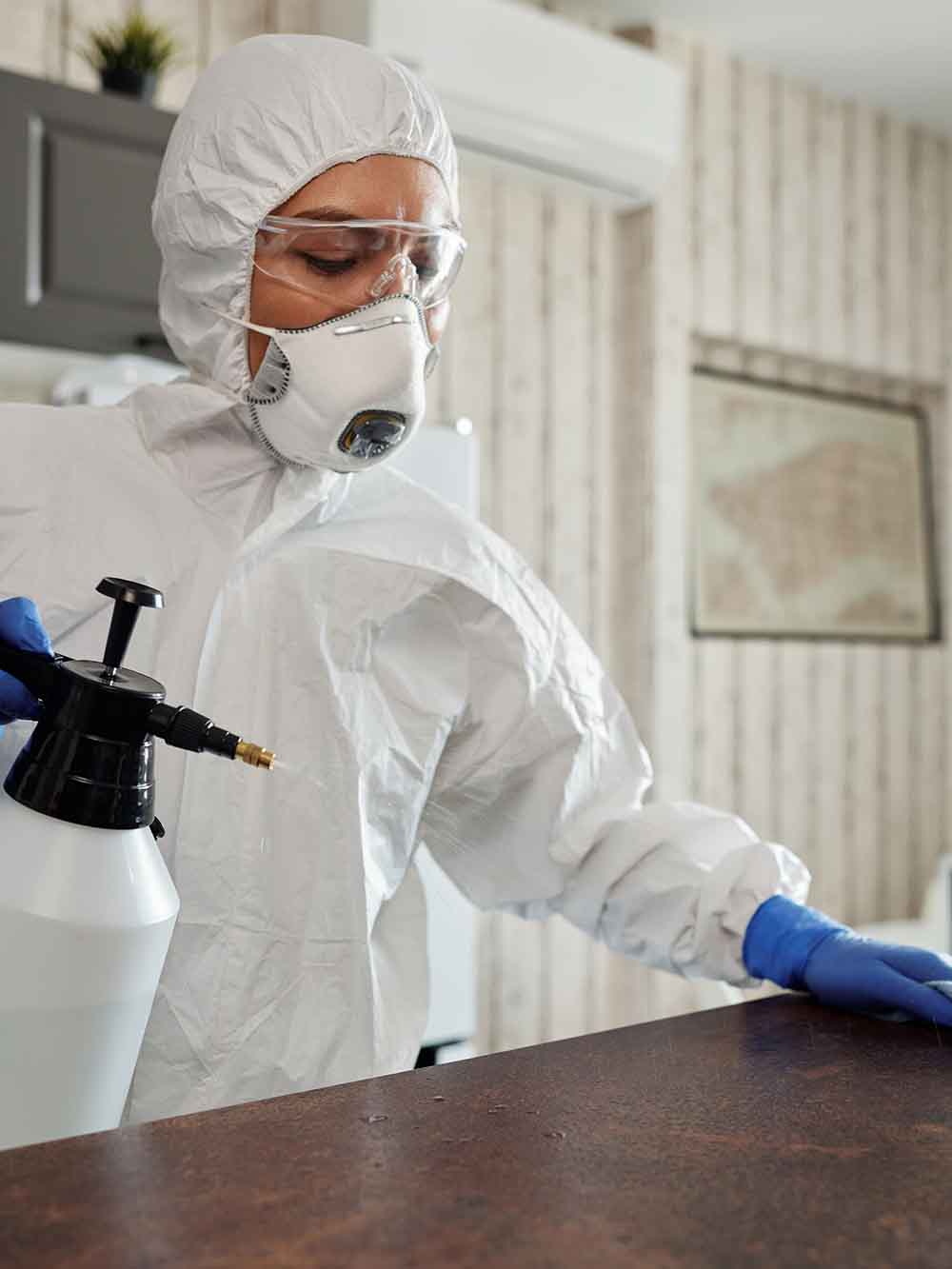
Disadvantages of Fumigation
One main disadvantage of using fumigation treatment is that there is no residual effect on the treated structure. Therefore, no residues remain in the treated spaces once the areas have been ventilated and cleaned properly. Hence, it does not help in protecting the treated structure from future pest infestations.
Since the knockdown effect of target pests depends on its respiration rate, low temperature of the treated environment may make the pest less susceptible. This is due to the fact that the lower the temperature of the surrounding, the lower the respiration rate of the pest.
Pro Tip: It's better to hire professional pest management services to ensure the fumigation treatment effectiveness.
Factors Contributing to Fumigation Failure
Fumigation failures are common. It can be due to the improper application and pest resistance. In addition, inappropriate choice of fumigants and loss of fumigant through leakage in treated spaces can also affect the effectiveness of the treatment. Hence, a leak detector is sometimes utilized before the treatment.
Final Note
Fumigation treatment, while seen to be effective because of its volatile and gaseous nature to target pests, can actually be harmful to human and pets. The excessive use and misuse of the fumigants not only pose harmful effects on human’s health but cause adverse effects on the treated commodity and property.
The use of it must be handled by trained and certified fumigators as they will have enough knowledge on its application and precaution steps before and after the treatment.
Careful planning and application must be adopted before the treatment is carried out. The appropriate choice and use of fumigants are vital as it may cause fumigation failures and hazards to the environment.
Frequently Asked Questions
Fumigation treatment is usually required in freight, shipping, storage and food manufacturing industries. Businesses in these industries must avoid the spread of pests and minimize the risk of damage to the goods or people’s health.
Fumigation treatment usually lasts for years, but it is recommended to have regular inspections to keep the areas protected.
It is important to remove plants and pets before fumigation, and also all the food and medicines that are open and/or are not sealed.
Related Posts
7 Tips to Protect Your Home from Subterranean Termite Infestations
Have you found mud tubes forming on your wall or at the side of your cabinet? Have you seen discarded insect wings on the ground around your home? Have you heard hollow sounds when tapping on wood or timber inside your house? If yes, subterranean termites may have already established their nest inside your house! If not, now is the time for you to do some prevention.
Subterranean termites are known to be the highly destructive insect pests in the urban environment.
Each year, about US$40 billion of damages were accounted for worldwide. Their silent activities inside the structures can cause serious destruction well before you notice the infestation.

No one wants their home to serve as termites’ food. Getting rid of them can be expensive and repairing damaged structures can be troublesome. Therefore, it is vital to protect your house before the intrusion of subterranean termite infestations.
Here, we discuss 7 tips to protect your home from subterranean termite infestations.
1. Ventilate and Reduce Moisture Sources
Understanding your enemy will help you better prepare against termite infestations. Hence, understanding the conditions that favour subterranean termite activities is important, for example, their dependency on moisture. Moisture damage wood structures should be replaced as this type of wood is most welcoming for subterranean termite infestations. Moisture damage to wood is one of the roots of moisture problems in every house. Ensure crawl spaces (floor joints and sub-flooring) are properly ventilated to minimize the amount of moisture around the areas.
2. Maintain Your Building Exteriors
Leaky pipes around your home need to be repaired to prevent water from leaking into wooden siding and windows. Furthermore, trimming all shrubs near home exteriors can help to quickly dry damp areas.
3. Use Proper Landscaping Materials
Synthetic mulch can be used when landscaping. Unlike wood mulch, it does not feed termites and any other pest. Besides, pea gravel can be used for keeping your wood mulch from contacting your home’s foundation.
4. Reduce or Monitor Plant Boxes Around Your Home
Planter boxes abutting building walls can give the chance or facilitate the process for foraging termites to enter the building. Make sure there is no close proximity between planter boxes and building walls to avoid future subterranean termite infestations.
5. Use of Wood Polish
Wood polishes not only give a good looking appearance to the wood used but also provide a protective coat to the wood. It can also provide water resistance to the wood which helps reduce the moisture source for subterranean termites. Make sure wood polish is applied thoroughly on the wood surfaces including the edges and sides of the wood used to prevent any entry point found by subterranean termites.
Pro Tip: Whether you've had termite infestation before or want to prevent them, have annual inspections of your home for termites.
6. Get Your Home Inspected by an Expert Each Year
Subterranean termites are the most highly destructive insects that can damage your home. Early detection of subterranean termite infestations can help to avoid financial burdens. Hire a pest control professional who is trained in termite detection. They have adequate equipment and experience to look for the tell-tale signs of termite infestations.
7. Barrier Treatment
This management treatment can be divided into treatment prior to construction (pre-construction soil treatment) and after construction (corrective soil treatment). Pre-construction soil treatment involves creating chemical barriers in the soil around and under the building foundation to prevent the intrusion of soilborne subterranean termites. Corrective soil treatment, in contrast, creates chemical barriers along the perimeter of the building.
The occurrence of subterranean termite infestations can become challenging to house owners to successfully manage on their own.
Proper inspection and identification of the type of termites is a more efficient way to manage them.
Click here for further information. Killem Pest can solve your problem!
Frequently Asked Questions
Subterranean can cause significant damage, specifically to the structure of your home (if they don’t get treated quickly).
There are various termiticide treatments available out there, but it is best to have professional pest management services handle the infestation.
Since subterranean termites are attracted to moisture, reduce humidity in your house, and make sure that there’s no water accumulation near the home’s foundation.
Related Posts
What Common Pests Are Found in Your Garden?
Termites

You may love spending time in your backyard and tending to your garden. Your children and pets also enjoy playing outside. Perhaps you grow flowers, or vegetables and fruit for you and the family to eat. However, many different types of pests enjoy the garden just as much as you do, and that can be a problem. Let’s take a look at some of the most common pests that like to hang out in the garden.
Table of Contents
Bees and Wasps
If you see a bee or two in your garden, it’s not usually a sign to worry. In fact, bees are essential for pollination, and they can do your garden, and the rest of the gardens in the area, a favor. However, when it comes to wasps, or if you have too many bees that are causing problems, you may want to contact a bee or wasp removal specialist to have them removed because the stings are not only painful, but may also be fatal to people that are allergic to bee and wasp stings.
Snakes
Most people hate seeing snakes in the garden, and they do have the potential to be a problem.
If you have non-venomous snakes that are small and not overly aggressive, they can help to control the rodent population, which is another garden pest we will discuss.
However, if the snakes are venomous, if it is very big, if you are unsure about them, or if you simply have a fear and dislike for snakes, you should have them removed as soon as possible. This is an especially good idea if you have children or pets.
Termites
If you notice termite mounds in your garden, this is a very bad sign and an indication that you already have an infestation. While those termites will not be interested in the flowers and vegetables you are growing, they will be interested in marching to your house so they can start eating the wood so get a termite control specialist in to remove them as soon as possible.
Rodents
Rodents in the garden can be very destructive. They may start to eat at the items you are growing, and they are disease carriers. Nothing good comes from having rodents in the garden, and they may also decide to move inside your home where they can get at even more food and cause more issues.
Mosquitoes
Mosquitoes are very dangerous, not just annoying. These pests carry diseases, such as the Zika Virus and Dengue. They breed in areas of standing water, which could be a bird feeder, a puddle, or a water collection bin. It is always a good idea to have someone take care of the mosquitoes before they become a problem.
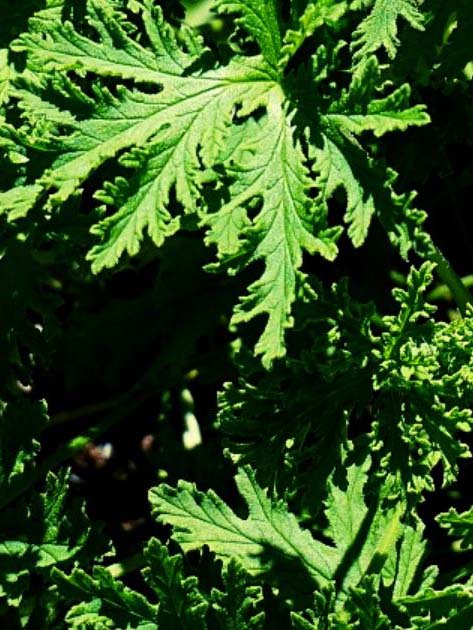
Ants
Depending on the types of ants in the garden, it might not be a problem.
Smaller ants can help with the pollination as they are crawling around the garden, and they can also help to keep caterpillars and other types of pests at bay.
They do not generally cause issues by eating anything in the garden, but if you have a lot of ants, they could always decide to head inside. It might still be a good idea to contact pest control.
Pest Control for Gardens
We have a list of the common garden pests in Singapore. Now let’s discuss some natural ways to protect your garden from pests.
Apply the following solutions to keep most common garden pests away:
- Citronella plants to prevent mosquitoes.
- Avoid overwatering to reduce high levels of dampness, as this attracts many types of pests.
- Dust off the leaves of plants to eliminate potential nesting sites.
- Dish soap mixed with water in a spray bottle can help get rid of many pests that settle on plants.
Pro Tip: Some natural remedies can be ineffective and make pest problems worse, so the best way to get rid of garden pests is to call a professional for help.
What Should You Do?
If you have pests in the garden, the best way to get rid of them is to call a professional for help. They can come and look at your problem, and then determine the best way to proceed and to provide you with a pest free environment.
If you would like more information on how Killem can help you keep your garden pest free, visit our residential pest control services page.
Frequently Asked Questions
Pests can cause major damage to your garden. They can chew holes in your leaves and feed on roots, which kills the plants.
Sometimes pests are not visible, but you can identify them by the damage in your garden, like holes in leaves, small grubs around the roots of container plants, and skeletonized leaves.
The best way to get rid of the pests is to prevent the infestation in the first place. Check your plants regularly and take measures as soon as you spot the signs of infestation.
Related Posts
How to Carry Out Safe Pest Control with Children and Pets in Your Home
Termites

Let’s be honest, no one wants to have pests in or near your home, especially when you have children or pets.
Infants and babies may be exposed to more pesticides than adults because they often spend more time closer to the ground, touching furniture bases or playing in the gardens where pesticides may have been applied. Infants and babies are also more likely to put fingers, toys and other objects that may have come into contact with pesticides into their mouths.
There are many different types of pests that can cause serious problems if they get out of hand, and you need to find ways you can control those pests safely and efficiently, without compromising the health and safety of your children and pets.
You can do some basic things that will help to keep the pests out of your home, but there might come a time when you need to call in the professionals.
What Are the Most Common Types of Pests?
While there are many different types of pests that could be plaguing your home, some of the most common and intrusive include:
Pests have the potential to destroy your home, get into your food and carry diseases. You should never have to live with pests. You should find ways to eradicate them.
What Are Safe Pesticides?
When it comes to choosing pesticides that you want, or you want your professional provider to use in and around your home, you need to be very careful. Many brands on the market are full of chemicals that could harm your children and your pets if it were ingested.
When you are choosing pesticides that you can use to deal better with the pests that you find, you should look for those that are organic and that do not have toxic chemicals in them.
One of the best things about working with Killem Pest for your pest control needs is that we use original, non-generic chemicals that are environmentally friendly and have low mammalian toxicity. This means that even if children or pets accidentally ingest the pesticide, they would not become ill.
Pro Tip: To choose an effective pesticide, you need to know what pest you are dealing with.
In addition, you can do other things that will help to keep your children and pets safe. If you are putting out bait for rodents, for example, never leave it in an area where your children or pets could have access to it. They could put it in their mouth. Instead, put the bait into a locked bait station or in an area that cannot be opened or reached by children or pets so that only rodents can access it.
If the pest control company has come and sprayed, make sure that any of the residual spraying has dried before allowing children or pets into the area. Make sure your animals are not licking the plants or the walls where the chemicals were sprayed, too.
You should also always make sure your children wash their hands after they have been playing outdoors, and stress the importance of not touching any bait stations that you might have.
How to Keep Pests Away
The following are some very simple and basic tips that can help you to control some of the pests in and around your home:
- Keeping your food in airtight containers can help to control the influx of ants, as well as rodents and roaches.
- If you have fruit that is left out on the counter, check it regularly to see if there are any bad spots on it, as this can draw fruit flies and other types of pests.
- A natural type of pesticide that you can make at home is citrus oil. You can use equal parts orange peels and water, and simmer them. Remove the peels and put the water into a spray containers and then spray around the windows, doors, and other areas where pests might be getting into the property.
DIY Pest Control Methods to Try at Home

Call in the Professionals
Of course, when it comes to pest problems, sometimes, the DIY home pest control methods are simply not enough. You need to call in the professionals that can provide you with a thorough service and remove those pests for good no matter what type they might be.
Frequently Asked Questions
The safety depends on the products and quality of services that you use, but generally, products for household insects pose no threat to people or pets. That is of course if the products are applied correctly and at low concentrations.
Modern pest control methods are designed to target pests and remain safe for children and pets in your house. Professionals are trained in safe application techniques and use only safe and approved products.
Although it’s not always necessary, some people feel comfortable taking their children and pets out of the house during pest treatment. Overall, you need to give the products time to dry before letting your household members have free access to the treated areas.
Related Posts
Killem Pest Profile Series: What You Need to Know About Termites
Termites
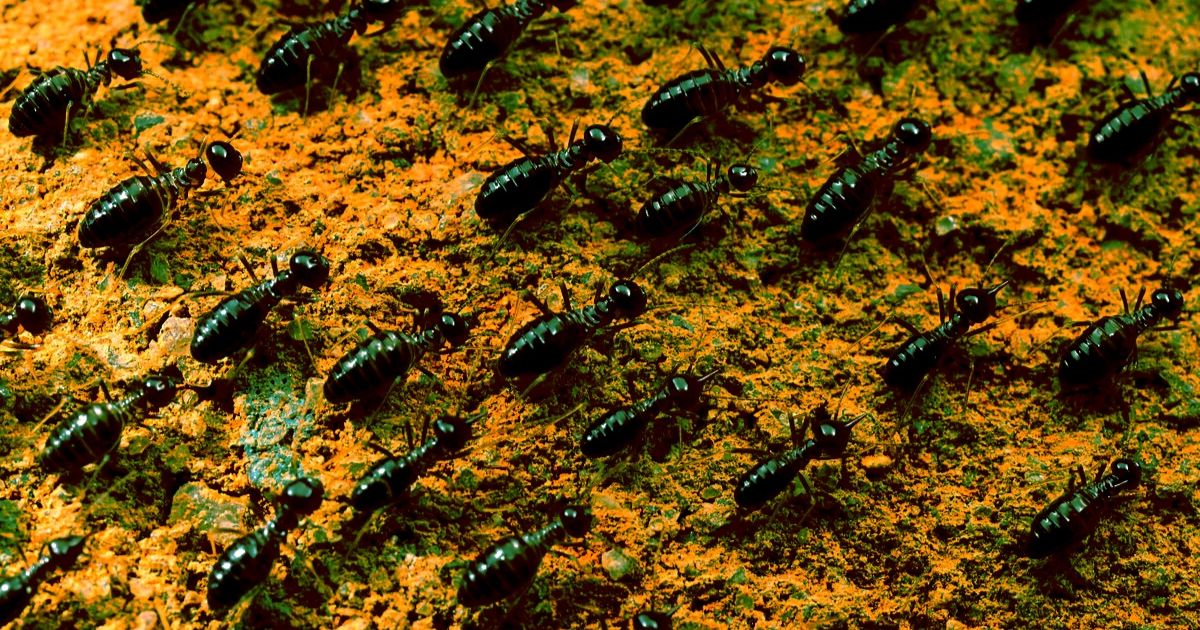
Are Termites Dangerous?
Termites are dangerous as they are able to weaken the structure of buildings!
Table of Content
- The Most Economically Destructive Pest
- Common Questions About Termites
- Are Termites Harmful?
- Will Termites Bite Humans?
- How to Tell If Termites Are Active in Your House
- Can Termites Eat Through Concrete?
- Lifecycle of Termites
- Why do termites shed their wings?
- Why do termites swarm?
- What is a termite mud tube?
- What do termite droppings look like?
- What are the Main Types of Termites?
- Tenacious Termites
The Most Economically Destructive Pest
In our previous posts, we mentioned the different treatments that can be carried out to prevent termite infestations. Some of the more common methods include soil treatment, corrective soil treatment, rodding, baiting and dusting.
Common Questions About Termites
Are termites harmful?
Termites are the most economically destructive pests.
In the US alone, it is estimated that termite infestations cause US$30 billion in damage to crops and manmade structures.
In addition to the high economic costs involved with termite damage, the structural damage caused to buildings, ceilings and furniture is also a danger to humans.
Will termites bite humans?
Following on from above, termites feed on cellulose and are not known to bite humans or even other insects (although ants are the natural enemy of termites). Nevertheless, if the termite colony has no other sources of food or if the colony is threatened, termites may on the rare occasion bite humans. The bite is like a pinch, but the pinches are not believed to result in any illnesses or disease in humans.
The Ultimate Guide to Termite Pest Prevention, Treatment and Control in Singapore

How to Tell If Termites Are Active in Your House
As we know, termites love eating wooden structures. It can be hard to spot a termite before structural damage is done. However, there are some signs to know if termites are active in your house:
- Termite droppings
- Termite wings lying around
- Weakened wood structures such as doors and shelves
- Unknown noises
Termites prefer dark and moist environments, so it can be helpful to look around your house with a flashlight to see if termites are active.
Can termites eat through concrete?
Termites feed on cellulose, which is an organic compound in the cell walls of plants and that wood is made off.
Termites do not eat concrete, however they are very resourceful and will squeeze through tiny cracks and thus opening up poor quality concrete for more termites to get through.
Once termites are inside, they build tunnels which get wider over time and therefore it appears like they have eaten through the concrete.
Pro Tip: To prevent termites from entering your home, seal all cracks, crevices and joints inside your house.
Lifecycle of Termites
There are few physical differences between the workers and nymphs of the different species. As such, termite identification is based on the soldiers or alates as well as the damage that is left behind.
Dampwood soldiers can be as large as 20mm and have large mouthparts on the front.
Drywood soldiers have large mouthparts with teeth and are larger than those of subterranean colonies.
Subterranean soldiers are creamy white in colour, but their head is often brown. They do not have wings and have large mouthparts.
Why do termites shed their wings?
One of the unique rituals termites do is the shedding of wings. This is part of the mating ritual of termites. The ritual plays out during the termite swarming season. As termites take flight, they start discarding their wings in order to form termites colonies. Once they shed their wings, termites cannot fly any longer. They then start to mate on the ground.
Why do termites swarm?
Termites swarm for a specific reason: Mating. In warm climates such as in Singapore, termites swarm to mate and form new colonies. The swarming helps the termites find a mating partner.

What is a termite mud tube?
A termite mud tube is a highly advanced and sophisticated system. Termites create these mud tubes in wood structures as a way to travel around freely. The termite mud tubes keep the termites safe and provide them access to food and shelter. Never remove mud tubes by yourself, as it will lead the termites to seek out other places to create new mud tubes. Always contact a pest control professional to do a proper termite infestation treatment.
What do termite droppings look like?
Termite droppings are one of the signs of a termite infestation. How can you spot termite droppings? The droppings are tiny, usually just one millimeter in length. They have a brown colour and can often be seen along walls or near any wooden structures. If you notice termite droppings, make sure to contact a pest treatment professional.
What are the main types of termites?
Drywood Termites – These termites do not like moisture and typically live in wood such as dead trees, structural timbers of hardwood floors. Unlike subterranean termites, they do not need contact with the soil as wood is sufficient.
Dampwood Termites – These termites live in wood with high moisture content such as decaying wood and trees that can be found on the ground.
Subterranean Termites – These are the most common species of termites in Singapore and require three things: food (wood or cellulose material), a consistent source of moisture and a moderate to tropical environment. They can be found in structural timbers in buildings and in soil greenery outdoors. These termites will build their nests underground.
Tenacious termites
Termites are social insects and live in colonies. There are many ways that termites can enter a property. Some of these include coming in:
- Through construction joints
- Through wall joints and cracks
- Through floor cracks and slab penetrations
- Through plumbing and electricals
From our experience, we have even found termite trails at the 43rd story of a building!
For more information on how Killem can help eliminate your Termite problems please visit our termite control page.
Related Posts



